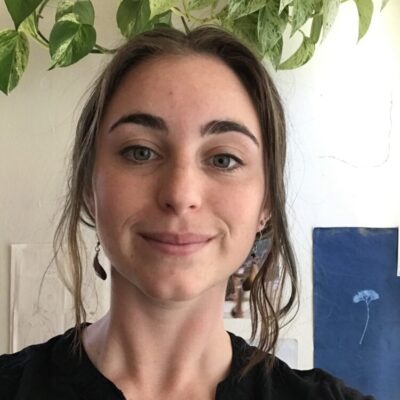Aleah Jennings-Newhouse Humanities and Social Science
Urban Agriculture in the Bay Area: Politics, Praxis, and the Public Good During COVID-19 and Beyond
The impacts of COVID-19 on socioeconomic relations, spatial arrangements, and the role of government, have increased the precarity of life for poor and working class communities and communities of color, who are disproportionately impacted by the current crisis and pre-existing systems of exploitation. At the same time, this moment offers opportunities to develop networks of production and distribution that center justice and solidarity, reconcile the organization of our communities with the realities of the climate crisis, and realign public goals with public actions.
This project aims to address a pressing contemporary contradiction of the situation of urban agriculture (UA) in the Bay Area. That is, existing research has elaborated how the benefits of UA extend beyond the confines of gardens themselves and provision for the general public on various scales of time and space, yet community-based UA efforts have been treated with a generally hands-off public sector approach and continue to face challenges to their most basic needs, such as access to sufficient affordable land, labor, and water. This project seeks to probe the following questions, using the COVID-19 crisis as a case study of the impact of UA and mutual aid on the resilience of urban food systems and community wellbeing: What roles are community-based UA projects playing in the current crisis, and how do they fit into networks of mutual aid that have emerged? In what ways does UA contribute to the public good in times of crisis and beyond, and what measures could demonstrate those public benefits? How does the public sector currently relate to UA in the Bay Area, and to what extent does it recognize the benefits of UA in times of crisis and beyond? What effects have public sector strategies had on the lives of UA practitioners? How could public sector approaches to UA better align with the needs of practitioners in order to more effectively facilitate a transition to a robust network of UA in the Bay Area?
Message To Sponsor
The SURF program offered many resources as I approached my research project, but moreover it allowed me to participate in a community of undergraduate researchers, exposing me to different interests, experiences, and approaches that have informed my own work. In the process, I have come to understand the difficulties I have faced with my own project as normal, and even important, which has shifted my approach to be both more confident and flexible. Despite facing personal obstacles this summer, this program largely demystified research, graduate school, and participating in academia at large. In addition, understanding the many paths that one can take has caused me to reconsider my options after completing my undergraduate studies, and exploring graduate school more seriously. I am so appreciative of the programming, wonderful staff, and funding especially in these strange and difficult times that SURF has offered me.